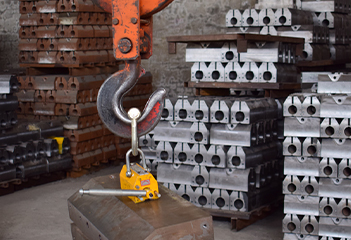Understanding the Process of Transporting Heavy Machinery and Equipment Safely and Efficiently
Heavy Machinery Moving Equipment An Essential Component of Modern Industry
In the contemporary industrial landscape, heavy machinery moving equipment plays a pivotal role in the effective and safe operation of construction sites, manufacturing facilities, and logistics hubs. As industries strive for greater efficiency and safety, the demand for specialized equipment designed to move heavy machinery has surged. This article explores the types, benefits, and considerations related to heavy machinery moving equipment, highlighting why it is indispensable in today’s various sectors.
Types of Heavy Machinery Moving Equipment
1. Cranes Cranes are perhaps the most recognized form of heavy machinery moving equipment. Available in various types such as tower cranes, mobile cranes, and overhead cranes, they provide the versatility needed to lift and position heavy loads at different heights and angles. With state-of-the-art controls and advanced safety features, modern cranes can handle complex lifting tasks with precision.
2. Forklifts Used predominantly in warehouses and construction sites, forklifts are essential for lifting and transporting heavy loads over short distances. They can be equipped with various attachments, including forks, platforms, and clamps, to suit different materials and tasks. Electric and diesel-powered options provide versatility depending on the working conditions and environment.
3. Flatbed Trucks For transporting heavy machinery over longer distances, flatbed trucks are invaluable. These trucks are designed to carry oversized loads and provide the stability needed to support heavy equipment during transit. Load securing mechanisms are essential to ensure safety, preventing any shifting or falling during transportation.
4. Heavy-Duty Dollies and Rollers For moving machinery within a facility, heavy-duty dollies and rollers allow for easier relocation without the need for large trucks or cranes. These devices can be equipped with hydraulic lifts and locking mechanisms to stabilize machinery while it is being moved.
5. Transport Trailers When it comes to moving heavy equipment between job sites, specially designed transport trailers, such as lowboys and step-deck trailers, are crucial. These trailers allow for efficient loading and unloading, reducing the risk of damage to both the machinery and the roadways.
Benefits of Using Heavy Machinery Moving Equipment
1. Safety Moving heavy machinery involves significant risks. The use of specialized moving equipment minimizes the risk of accidents and injuries. Features such as load balancing, shock absorption, and automatic stop systems enhance safety during the moving process.
2. Efficiency Heavy machinery moving equipment is designed to streamline operations. Tasks that would take numerous personnel hours can often be accomplished in a fraction of the time with the right equipment, leading to improved productivity and lower operational costs.
heavy machinery moving equipment

3. Precision Modern moving equipment often employs advanced technology, including GPS and computer controls, to ensure accurate positioning and maneuvering. This level of precision is essential in settings like construction sites where space is constrained.
4. Versatility The variety of heavy machinery moving equipment available allows businesses to choose the right tool for the job, ensuring they can handle different types and sizes of machinery while adhering to specific operational needs.
Considerations When Using Heavy Machinery Moving Equipment
While heavy machinery moving equipment offers numerous advantages, several considerations must be taken into account
1. Training Proper training for operators is essential. Misuse can lead to accidents and equipment damage. Companies must invest in training programs to ensure personnel are aware of the operational protocols and safety measures.
2. Maintenance Regular maintenance of heavy machinery moving equipment is critical to ensure its reliability and longevity. Scheduled inspections and servicing help prevent unexpected breakdowns that could disrupt operations.
3. Regulations Compliance with local and national regulations regarding equipment use and safety is paramount. Businesses must stay informed about the latest requirements to avoid legal issues and foster a culture of safety.
4. Costs The initial investment in heavy machinery moving equipment can be significant. Businesses must weigh the costs against the expected returns in efficiency and safety benefits to determine the feasibility of such equipment.
Conclusion
In conclusion, heavy machinery moving equipment is a cornerstone of modern industry, facilitating the safe and efficient movement of heavy loads across various settings. As technology advances and industries evolve, the role of this equipment will continue to grow, further enhancing operational capabilities. Investing in the appropriate moving equipment, along with training and maintenance, will ensure that businesses can navigate the complexities of heavy machinery transport while maximizing productivity and safety.
-
Unlock Seamless Relocation with Our Heavy Equipment Moving ExpertiseNewsJun.06,2025
-
Unleash Unrivaled Flexibility with Our Adjustable Gantry CraneNewsJun.06,2025
-
Unleash Heavy-Duty Efficiency with Our Industrial Gantry Crane SolutionsNewsJun.06,2025
-
Revolutionize Steel Handling with Our Magnetic Lifter RangeNewsJun.06,2025
-
Master Equipment Mobility with Premium Machinery Mover SolutionsNewsJun.06,2025
-
Elevate Your Material Handling with Magnetic Lifter TechnologyNewsJun.06,2025
-
YS Permanent Lifting Magnets: The Smarter Way to Handle SteelNewsMay.22,2025
